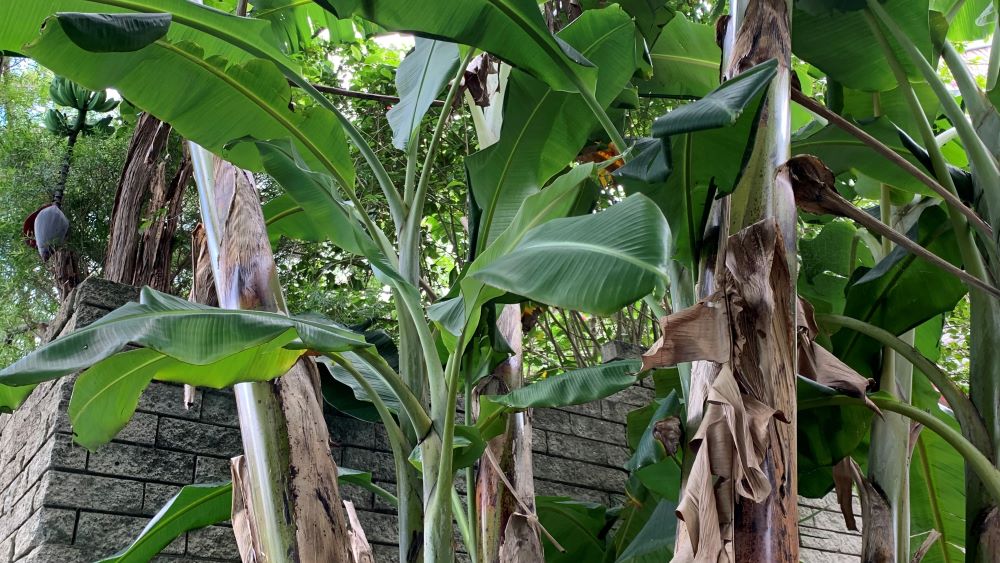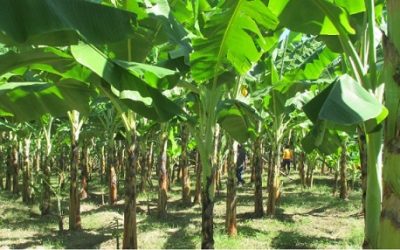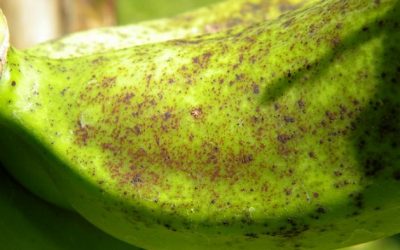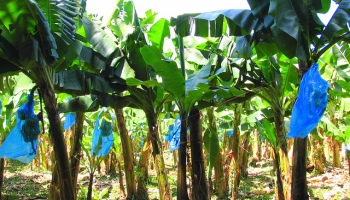Why Banana Plants Get Droopy Leaves.

Banana plants get droopy leaves from over or under-watering, transplant shock, a lack of sunlight, and bearing too much weight. However, the most common causes are under-watering and transplant shock. To prevent droopy leaves, keep your plant in well-draining and moist soil and provide 6+ hours of sunlight.
Even though banana plants can recover from droopy and wilting leaves, how can we tell what’s causing it, and how can we fix it?
Over or Under-Watering
Banana plants commonly get droopy leaves from over or under-watering. Over-watering banana plants tend to cause leaves to droop, yellow, and fall off, while under-watering typically causes drooping, wilting, drying, and browning. For best results, only water banana plants when the top 2-4 inches of soil gets dry.
Both over and under-watering can be a fairly normal occurrence for banana plant growers and both can lead to drooping leaves, along with other issues such as yellowing and browning leaves.
The best type of water to use for banana plants is soft water. If you’re using tap or irrigated water, chances are that the water is pretty hard. Consider using soft waters such as filtered, reverse-osmosis, or rainwater if possible.
Compost is amazing at improving the water retention in the soil, to the point that every 1% in soil richness can hold an additional 20,000 gallons of water per acre (source).
Mulch helps protect the banana plant’s roots and beneficial soil life from the sun, wind, and rain. Without protection, the soil can easily dry out from the sun and wind and erode from the rain. Mulch is incredibly helpful in all climates, and especially those that are hotter and drier. Some good mulches for banana plants are leaves, bark, straw, and pine needles.
When applying either compost or mulch, place them on top of the soil under the canopy of the plant, and at least 3 inches away from the trunks or stems to avoid mold.
Transplant Shock
Transplant shock is often caused by relocating or repotting banana plants and can stress the plant, leading to droopy, wilting, and dropping leaves. Some shock can also occur when there’s an extreme swing in temperature, such as moving a potted banana plant indoors. For best results, relocate carefully and gradually.
Like all plants, banana plants can get stressed from being relocated or repotted. This is because the plant’s rootball can get damaged and take time to establish a new root system. It can take most fruit trees up to a year to fully recover from transplant shock.
Some steps commonly used to prevent transplant shock with plants:
– Have the new ground (or pot) prepared
– Remove as much of the tree’s current topsoil as possible, without damaging the shallow roots
– Grab the base of the tree’s trunk and wiggle lightly
– Using your other hand, scoop up and support the rootball
– Lightly place the tree in the new ground (or pot) and fill it in
– Make sure the soil is at the same level on the trunk as before
– Apply 2 inches of compost and mulch to the top of the soil
Water generously and add more soil as needed
– However, since banana plants are more of a plant than fruit tree, and have a quicker lifespan, it can take just weeks to months for them to recover. However, this depends on the amount of stress from the move.
Banana plants can also get stressed if there’s a dramatic swing in weather. This stress can easily cause drooping or wilting leaves.
If you have an indoor banana plant and need to move it during extreme weather, try doing it gradually if possible. For example, 1-2 weeks before moving it inside, move it to the shade first. You can also mist it with water daily.


